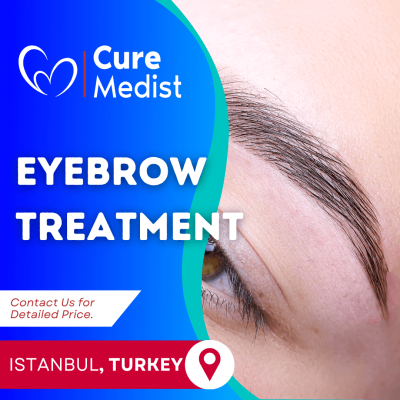An eyebrow transplant is a cosmetic procedure designed to enhance or restore eyebrows that are sparse, thinning, or completely absent. This procedure is typically performed by a qualified plastic surgeon or dermatologist who specializes in hair restoration techniques.
Procedure Overview:
- Evaluation and Planning:
- Before the procedure, you will have a consultation with the specialist. They will assess your eyebrows, discuss your goals, and determine if you are a suitable candidate for the transplant. Factors such as eyebrow shape, density, and symmetry will be considered during this evaluation.
- Donor Hair Harvesting:
- Hair follicles for the transplant are usually harvested from the back of the scalp, where hair growth is typically dense and the hair is similar in texture to eyebrow hair. The hair follicles are carefully extracted one by one using a technique called follicular unit extraction (FUE) or strip harvesting (FUT).
- Preparation of Hair Follicles:
- The harvested hair follicles are then prepared under a microscope. Each follicle is trimmed to the appropriate length and size for eyebrow transplantation.
- Recipient Site Preparation:
- The specialist will numb the eyebrow area with local anesthesia to ensure comfort during the procedure. Tiny incisions are made in the natural direction and angle of eyebrow growth, where the new hair follicles will be implanted.
- Implantation of Hair Follicles:
- Using specialized tools, the prepared hair follicles are carefully inserted into the recipient sites. The placement of each follicle is crucial for achieving natural-looking results and ensuring proper growth direction.
- Post-Procedure Care:
- After the transplant, the eyebrow area may appear slightly red and swollen, which is normal and typically resolves within a few days. You will be provided with instructions on how to care for your newly transplanted eyebrows, including avoiding vigorous rubbing or touching the area.
Results:
- Immediate and Initial Healing: Initially, the transplanted hairs may shed within a few weeks of the procedure. This is a normal part of the healing process, and new hair growth typically begins within a few months.
- Long-Term Growth: Over the course of several months, the transplanted hair follicles should start to grow and blend naturally with your existing eyebrows. Full results can usually be seen around 6 to 12 months after the procedure.
Benefits:
- Natural Appearance: When performed by a skilled specialist, eyebrow transplants can result in eyebrows that look and feel natural.
- Permanent Solution: Unlike temporary makeup solutions or eyebrow pencils, eyebrow transplants provide a long-lasting solution for eyebrow enhancement.
Considerations:
- Candidates: Ideal candidates for eyebrow transplants include individuals with sparse or thinning eyebrows due to genetics, over-plucking, trauma, or medical conditions.
- Risks: As with any surgical procedure, eyebrow transplants carry potential risks, such as infection, scarring, or uneven growth. It’s important to discuss these risks with your specialist during the consultation.
In summary, an eyebrow transplant is a specialized procedure aimed at improving eyebrow aesthetics by transplanting hair follicles from a donor area to the eyebrows. It’s a solution for individuals looking to enhance their eyebrows permanently and achieve natural-looking results.






